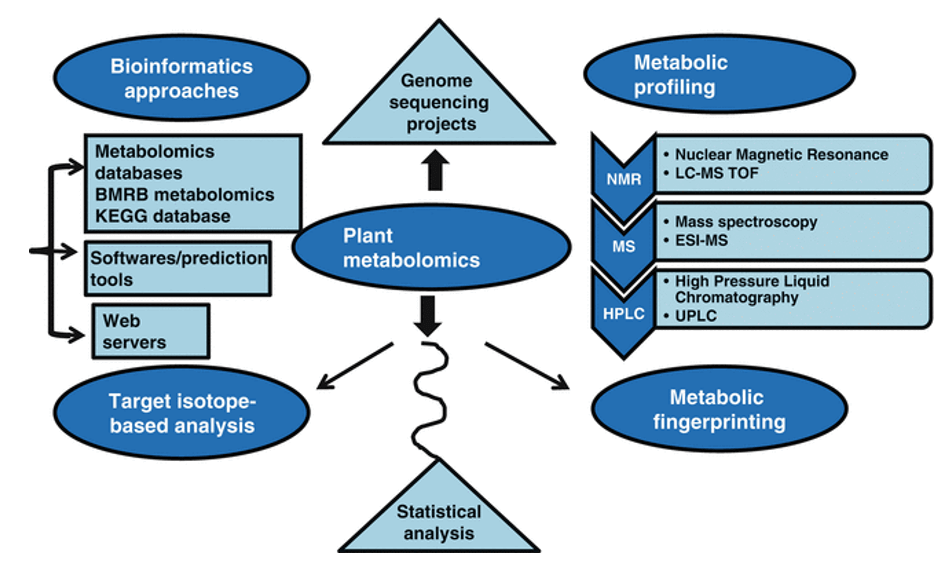Soyasaponins Analysis Service
Submit Your InquiryWhat are Soyasaponins?
Soyasaponins is a kind of common saponin, which mainly exists in legumes. The content of soyasaponins in legumes seeds generally ranges from 0.62% to 6.16%. Soyasaponins can be divided into A group, B group, E group and DDMP group according to the structure of saponin. Soyasaponins have the general properties of saponins. Pure soyasaponins are white powder, which can irritate the mucous membrane of all parts of human body. The molecular weight of soyasaponins is about 1000. Soyasaponins have high molecular polarity, which soluble in H2O, hot water, dilute alcohol containing water, hot methanol and hot ethanol, and insoluble in organic solvents with low polarity, such as diethyl ether and benzene. Soyasaponins have a high melting point and often decompose before melting, so there is no clear melting point.
Soyasaponins belong to acidic saponins. When ammonium sulfate, lead acetate or other neutral salts are added into the aqueous solution, the precipitation will be generated, and it can be separated and extracted by this property. Soyasaponins react with benzene to produce reddish brown precipitates, and show red color in glacial acetic acid-acetyl chloride solution. These properties can be used to detect the content of soyasaponins. Creative Proteomics provides the simple, rapid, accurate, affordable and highly automated analytical method and equipment to analyse soyasaponins. High performance liquid chromatography- electrospray ionization -mass spectrometry (HPLC-ESI-MS/MS) can solve some of the problems associated with soyasaponins analysis. Improved extraction and purification steps can also increase the sensitivity of the analytical method.
Advantages of Our Soyasaponins Analysis Service
Soyasaponins Assay Platform in Creative Proteomics
Our newly developed sample preprocessing method provides safety, environmental protection, rapidness, effectiveness, and recovery rates consistently exceeding 85%. Sample preprocessing at Creative Proteomics complies with the in-house standard operation procedures (SOP), ensuring maximized homogeneity between samples.
 Figure 1. Soyasaponins analysis service workflow.
Figure 1. Soyasaponins analysis service workflow.
Detector: UV-Vis detector
Mobile phase: Acetonitrile-ammonium acetate aqueous solution
Elution time: dozens of minutes, slightly different according to different ingredients
Analysis content:
- Standard curve creation
- Raw data preprocessing
- Absolute quantitation of soyasaponins
- Differential metabolites screening
- Optimal analyses
List of Detectable Soyasaponins at Creative Proteomics
| Detectable Soyasaponins | CAS |
|---|---|
| Soyosaponin Ac | 133882-74-3 |
| Soyosaponin Ab | 118194-13-1 |
| Soyasaponin Aa | 117230-33-8 |
| Soyasaponin Ae | 117230-34-9 |
| Soyasaponin Af | 117230-32-7 |
| Soyasaponin IV | 108906-97-4 |
| Soyasaponin Ba | 114590-20-4 |
| Soyasaponin Bd | 135272-91-2 |
Applications of Soyasaponins Analysis by LC-MS
1. Characterization of Soyasaponin Profiles
LC-MS analysis enables the comprehensive profiling of soyasaponins present in different soybean varieties or soy-based products. By employing advanced chromatographic techniques coupled with mass spectrometry, Creative Proteomics can identify and quantify various soyasaponin isomers, providing a detailed characterization of their chemical structures. This information is crucial for understanding the biological activities and potential health benefits associated with specific soyasaponin profiles.
2. Quality Control in Soy-Based Products
The soyasaponin content in soy-based products, such as soy milk, tofu, and soy protein isolates, can vary significantly depending on the processing methods and the quality of the source materials. Analyzing soyasaponins using LC-MS allows for accurate determination of their concentration, ensuring consistent quality control of these products. Creative Proteomics' soyasaponins analysis service can help food manufacturers and suppliers maintain the desired soyasaponin levels in their products, meeting regulatory requirements and consumer expectations.
3. Biological Activity Studies
Soyasaponins have been attributed to numerous biological activities, including antioxidant, anticancer, and anti-inflammatory effects. LC-MS analysis provides a valuable tool for evaluating the relationship between soyasaponin profiles and biological activities. By comparing the concentrations of specific soyasaponins with their corresponding bioactivity, researchers can gain insights into the structure-activity relationships and identify potential targets for therapeutic intervention. Creative Proteomics' soyasaponins analysis service offers a comprehensive assessment of soyasaponin content, aiding researchers in understanding the underlying mechanisms of their biological effects.
4. Nutritional Studies and Functional Foods
Soy-based products are widely recognized for their nutritional value and potential health benefits. Analyzing soyasaponins by LC-MS contributes to nutritional studies by quantifying these bioactive compounds accurately. This information can be utilized to optimize the formulation of functional foods fortified with specific soyasaponins, enhancing their nutritional profiles and health-promoting properties. Creative Proteomics' soyasaponins analysis service provides a reliable and efficient approach to support research and development in the field of functional foods.
Sample Requirements for Soyasaponins Analysis
Sample Type:
- Plant Materials: You can provide plant samples such as leaves, stems, roots, or seeds that are known to contain soyasaponins or related compounds. These plant materials can be from soybean plants or other plants that are known to contain soyasaponins, such as fenugreek, chickpeas, or licorice.
- Herbal Extracts: If you have herbal extracts derived from plants known to contain soyasaponins, such as traditional Chinese medicines or herbal supplements, these can also be suitable sample types for soyasaponins analysis.
- Food Products: Soyasaponins can be present in various food products, including processed foods, beverages, or dietary supplements that contain soy-based ingredients. Examples include soy milk, tofu, soy protein isolates, or soy-based functional foods.
- Other Matrices: In addition to plant materials and food products, other matrices that may contain soyasaponins, such as animal tissues, biological fluids, or environmental samples, can also be analyzed for soyasaponins content.
Sample Quantity:
For soybean extracts and soy-based products, a minimum of 10 grams is recommended. However, smaller sample quantities can be accommodated based on the sensitivity requirements of the analysis. For other matrices containing soyasaponins, please consult with our experts to determine the appropriate sample quantity.
Sample Storage:
Samples should be stored at -20°C or lower to maintain the stability of soyasaponins. They should be protected from light and other potential sources of degradation.
Delivery
- Experimental procedure
- Parameters of HPLC-ESI-MS/MS
- Purity analysis report
- HPLC-ESI-MS/MS raw data files and HPLC-ESI-MS/MS data quality checks
- Metabolites quantification data
- Custom analysis report
HPLC-ESI-MS/MS based profiling of soyasaponins enables quantitative analyses in a faster, more convenient, and more sensitive manner. With decades of experience in HPLC-ESI-MS/MS services, Creative Proteomics has a proven track record supporting diverse soyasaponins detection and quantitation. We can meet your specific project requirements, from sample to bioinformatics.








